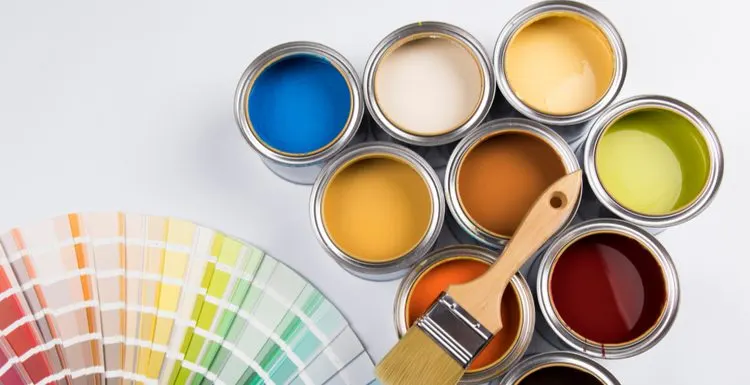When taking on the difficult task of painting your house or taking on a painting project, you have to choose the color, sheen, and type of paint before starting.
What’s the difference between all the types of paint, and why does it matter?
The Various Types of Paint
There are several types and subcategories of paint. If you’re painting inside your house, you’ll want to use interior paint.
There are different bases for paint and varying finishes, each geared towards a specific function within your home.
When choosing the best type of paint for a home, it’s essential to consider whether you’ll use indoor or outdoor paint. After all, these are very different paints, geared for very different purposes.
Interior Paints
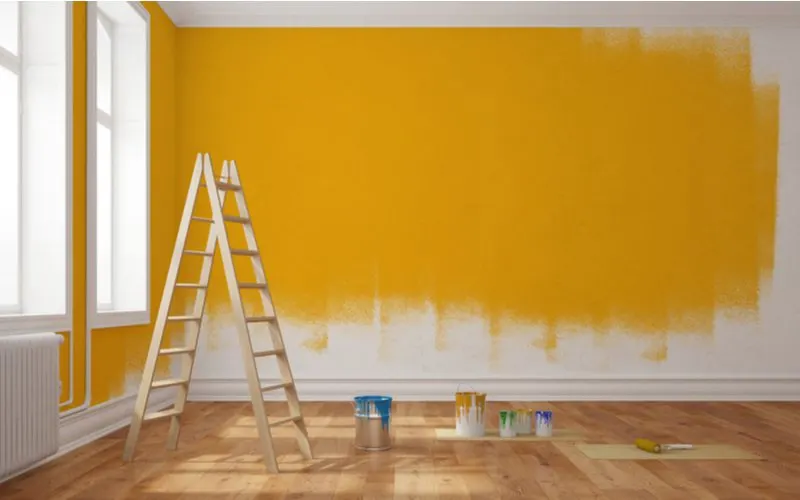
Robert Kneschke/Shutterstock
The overarching category of paint with the most subcategories is interior paint. There are different types of paint suited for varying parts of the house.
Interior paints are either oil-, water-, or latex-based and have five basic finishes from which to choose. The one you choose will affect how the room looks in the end.
Interior paint is safest for the interior of the house. While all paints have some volatile organic compounds (or VOCs), interior paints have fewer.
These compounds keep the liquid from drying inside the can. They are then released from the paint as it dries. When deciding which kind of paint to use, you should consider the following things:
- Which room you’re painting
- Whether you’ll need a primer
- How many coats of paint will you need?
- The amount of traffic the room will have
- The quality and cost of the paint
- How family-friendly the paint sheen is
- How easy is the paint to clean?
1. Oil-Based Paint
Oil-based paint has been used for centuries as the standard for painting. This kind of paint lasts longer than water-based paint and is more affordable. It’s durable and resilient to scratches and dirt.
However, it’s not the most popular option for interior painting. There are two main types of oil-based paint. Most oil-based paint is alkyd-based, meaning that the base is a chemical mix of oils.
Organic oil-based paint is harder to find. While it’s more delicate and cracks easier, organic-based paint also has a naturally lower amount of VOCs.
Oil-based paint takes several hours to a full day to dry, making it a longer process if you plan to apply more than one coat.
Many people choose to use oil-based paints for their trim or doors because those areas have a higher chance of getting dirty or cracking. Oil-based paints also have a higher amount of VOCs than water-based paints.
VOCs allow the paint to last longer but can release more fumes during the drying process. Interior paints have a safe amount of VOCs, but it’s still wise to paint with a mask and keep the room well-ventilated, especially if you decide to use oil-based paint.
2. Water or Latex-Based Paint
Water-based paint is much more common than oil-based paint because of the lower VOC content in water-based paints. Also, paint jobs don’t usually last more than a few years, and water- or latex-based paints are easy to paint over.
Water or latex-based paint is slightly less durable than oil-based paints but dries much faster. Usually, a layer of paint will dry within an hour, making it easier to put several layers on the wall.
Water-based paints are easier to clean than oil-based paints, making them popular in houses with families. Water- or latex-based paints have much fewer VOCs than oil-based paints because of their water solubility.
For this reason, the majority of indoor paints are water- or latex-based, even though they are slightly more expensive and don’t last as long as oil-based paints.
Latex-based paints can either be water-based or chemically-based. While these terms are used interchangeably at times, they’re not always the same product.
It’s vital to check your paint cans and ensure whether your latex-based paint is water-based or not. However, latex and water-based paints act very similarly, so we’re grouping them in this article.
They are both water-soluble, which is why many define them as the same type of paint. Practically, there’s very little difference between the two types of paint bases.
Sheen Level
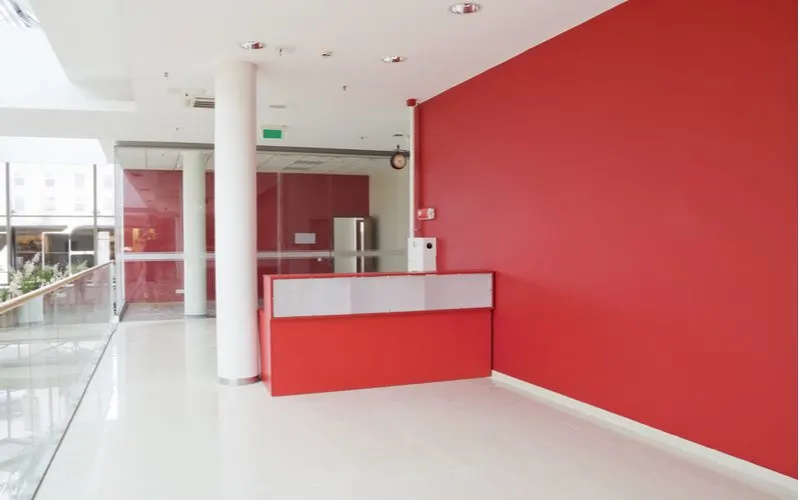
Vilax/Shutterstock
Sheen is how shiny or “flat” a paint looks when it’s dry. It varies based on the amount of resin or pigment in the paint. Paint with more polish looks glossier, while paint with more pigment looks duller and more matte.
However, the final sheen on your paint is more than how the paint looks. Varying glosses have different uses, and experts recommend them for various rooms of the house. These come in five major types:
1. Matte Paint
Matte paint has the lowest level of shine. It has a smoother appearance and generally needs fewer coats than higher-sheen paints.
Because matte is slightly thicker than other finishes, it’ll hide stains or blemishes on the wall. However, the matte finish is more difficult to clean.
We recommend using matte paint in areas with low traffic.
2. Eggshell Paint
Eggshell is the most common finish. It has a smooth finish, like matte paint, but a little more shine. Eggshell paint is also easier to wash and doesn’t get damaged by the cleanser.
You should paint rooms with eggshells that have low to medium usage. Eggshell paint hides scuffs and dirt marks well because of its lower sheen.
3. Satin Paint
Satin paint sits in the middle of the sheen spectrum. While it has a soft sheen, the higher amount of resin allows it to be more dirt- and water-resistant and very easy to clean.
We recommend using satin-sheen paint in busier rooms in the house, such as the kitchen. Satin sheen is the most versatile finish.
4. Semi-Gloss Paint
Semi-gloss has a smooth sheen with a reflective finish. Made for high-traffic areas and rooms that get a lot of moisture, semi-gloss is perfect for bathrooms.
It’s easier to clean than any other type, but it shows every dirt mark and scuff. Semi-gloss paint has the brightest whites of any paint finish.
5. High-Gloss Paint
High-gloss paint isn’t used nearly as often as semi-gloss. Of course, it’s the shiniest paint, with a smooth, glossy finish.
However, high-gloss paints require more coats, and you must paint them on smooth surfaces (or with several layers of primer). It’s a delicate finish, meant for more formal rooms without much natural sunlight.
Exterior Paint
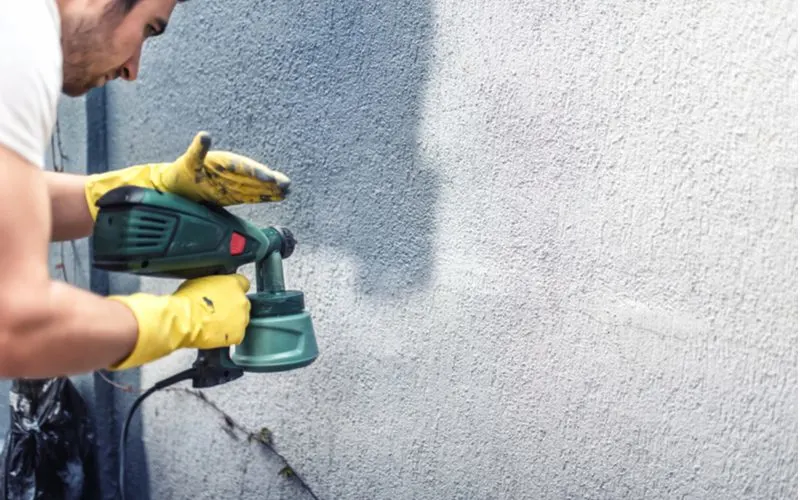
Bogdanhoda/Shutterstock
Exterior paint is very similar to interior paint, with a few key differences. It can either be oil- or water-based but doesn’t have as many finishes. Exterior paint generally only comes in a matte finish because gloss isn’t as effective on the outside of a house.
This type of paint has the same ingredients as interior paint, just with different ratios. Although interior paint and exterior paint have many similarities, they aren’t interchangeable.
If you use exterior paint indoors, you could release too many fumes into the house and risk the health of everyone in your home.
If you paint the outside of your home with interior paint, it’ll crack and not last long in varying weather conditions. Not sure what color to go with? Check out our guide on exterior house colors and what they mean.
Interior vs. Exterior Paint
Exterior paint is usually acrylic latex-based paint because of its resistance to fading in the sunlight. However, oil-based outdoor paints last longer and are available as well.
They’re less expensive and last longer, but they don’t have the same weather resistance as latex paints.
While exterior paint exists with pigments, solvents, additives, and resins (or binding agents), additives and solvents are the same as interior paint. The resin and pigment content are different.
Outdoor paints have a more flexible binding agent than indoor paints. The resin can withstand weather and sunlight without losing its elasticity or cracking.
Interior paints have a very rigid resin, making them easier to clean and giving them a shinier surface. Outdoor paints also have more pigment than their indoor counterparts.
The added dyes keep the colors from fading in the sunlight or rainstorms. Exterior paint colors last much longer than interior paints because of their extra pigments and flexible binding agents.
It’s easier to clean indoor painted surfaces. The makeup of exterior paint makes it weather, fungus, and mildew resistant and protects the surface underneath.
However, because it’s a matte-based paint instead of a glossier finish, it shows scuffs and blemishes easier. Interior paint stays cleaner. Outdoor paints also have a much higher level of VOCs than interior paints.
Because they sit on the exterior of buildings, they are safe to have more fumes released. These compounds are often part of the protective layer of anti-mildew and fungus chemicals in the paint to keep the house from gathering mold after a rainstorm.
The amount of VOC in exterior paints is the primary reason they are not interchangeable with inside paints. You should not put outdoor paint on the inside of the house, even with proper ventilation.
You should be careful even when painting outside with these paints and limit your exposure to them.
What Is Primer?
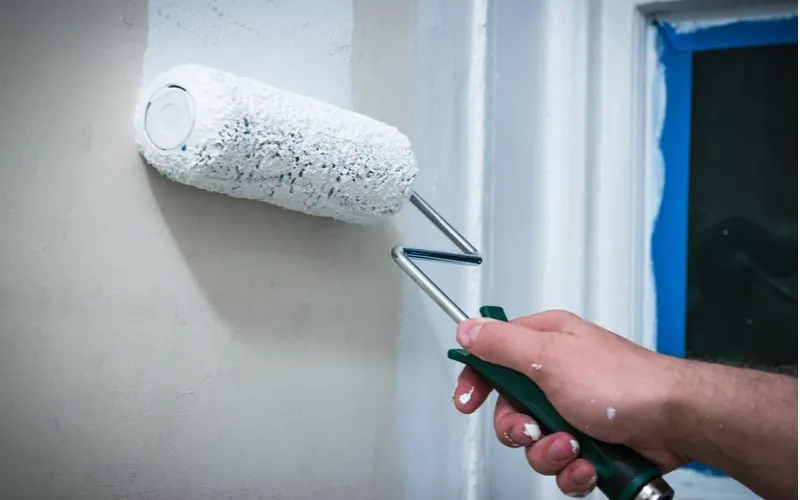
Benjamin Clapp/Shutterstock
Primer is also a type of paint. It can either be latex-, oil-, or water-based. Primer is generally a thicker paint, made to create an even surface for the top coat of paint—different kinds of primer work for varying wall surfaces.
Without primer, some wall areas might soak up a varying amount of paint, resulting in specific parts of the wall looking darker than other parts.
Primer soaks into the surface and creates a blank canvas for the actual paint layers. It also helps the paint stick to the surface of the wall better.
Primer is beneficial for high-gloss paints because they are thinner and require more coats. With primer, you might not have to worry about extra coats for lighter colors. Darker colors, on the other hand, might still need a few layers.
If you’re painting on raw wood, it’s best to use an alkyd primer. It’ll soak into the wood better than other primer bases. Stain-killing primer is an excellent choice for wood-based paint jobs because it can neutralize knots or stains that would otherwise show through layers of paint.
Latex-based primers work well on concrete, drywall, or plaster bases. They dry quickly and provide an excellent base for paint. Latex-based primers are also primers with the fewest VOCs, making them safer for indoor projects and unventilated areas (such as basements).
If your painting surface doesn’t need more than one layer, you can save money and get a two-in-one primer and paint. You won’t need to buy two separate cans of paint.
However, if you need more than one coat, it’ll be expensive. Make sure that it’s the right choice for your wall before investing in this kind of primer.
Types of Artistic Paint

Volurol/Shutterstock
Artistic paint is an entirely different product from regular wall paint. Although there are varying types of crafting paint that reflect the different kinds of wall paint, you shouldn’t use crafting paint to cover a wall.
You can apply it for more delicate and detailed work, and its makeup reflects that. Crafting paint is thinner and more delicate than wall paint.
Wall paint tends to have thicker solvents, more pigments, and broader coverage. Each different kind of artistic painting exists for a specific type of art. Here are the common types of craft paints:
- Acrylic paint
- Oil-based craft paint
- Watercolor paints
- Gouache paints
If you plan to paint a mural on your wall, thicker craft paint will work as long as it’s acrylic and latex-based. You might need more than one layer of pigment to achieve your desired color.
You can buy a clear cover coat to make a mural shine and stay intact for longer (especially in high-traffic areas of your house).
So, What Are the Types of Paint?
There are many different interior and exterior paints to choose from, and the difference between the two categories is vital.
If you’ve decided to paint your house or start a project, make sure you buy the right kind of paint with your desired finish.
Once you make that decision, your color can last for years without fading. Be sure to stop by your local hardware store and get their feedback as well!
I’ve found the associates in the paint departments to be very willing to help.

